Nowadays, people have all kinds of ways to promote themselves and their products, services, and businesses. Whether it’s through ads, press releases, influencer campaigns, or other forms of marketing and communication, there are plenty of options to choose from.
But that's where things get confusing: How do you know where to put your money? And what's the difference between all of these strategies?
The truth is, the ideal digital strategy for your business will include a mix of all of several types of marketing, advertising, and public relations. And this article is here to explain the difference between PR and advertising.
Advertising vs. PR: A quick intro
Advertising is the process of creating and paying for promotional messages, with the goal of driving sales or raising brand awareness.
Businesses run advertising campaigns in a few different ways:
- Print ads in newspapers and magazines
- TV ads and OTT (over-the-top) advertising
- Radio spots
- Online ads, including display and search engine ads
- Social media ads (e.g., Facebook, Instagram, Twitter, Snapchat)
- Physical ad space, including billboards, buildings, and buses
The advertising process involves planning a campaign, creating or buying the ad space, A/B testing different ad elements, and analyzing the results after launching. It is one of the most commonly used and effective marketing strategies, and just about every business will leverage paid traffic in some way.
Public relations (PR) is all about getting third-party coverage for your business. Instead of paying for ad space and advertising messages, PR works to build strong relationships with media outlets to get your product or service featured in news stories and articles.
Public relations activities include:
- Press releases sent to media outlets
- Getting product or company mentions on popular blogs and websites
- Influencer campaigns
- Public appearances and events
- Networking with contacts in your industry
PR campaigns involve a lot more than just launching press releases; you must also identify the right journalists, craft personalized pitches and tailored messages, and make sure you’re following up with reporters in a timely manner.
When comparing PR vs. media relations and PR vs. marketing, media relations is more similar to PR, while marketing is more like advertising.
What is the difference between PR and advertising?
PR and advertising are part of the same marketing and communication family. They even share some overlapping goals: raising brand awareness, creating a strong reputation, and driving sales. That said, there are key distinctions between the two strategies, and understanding those differences can help you decide which one to use for your business.
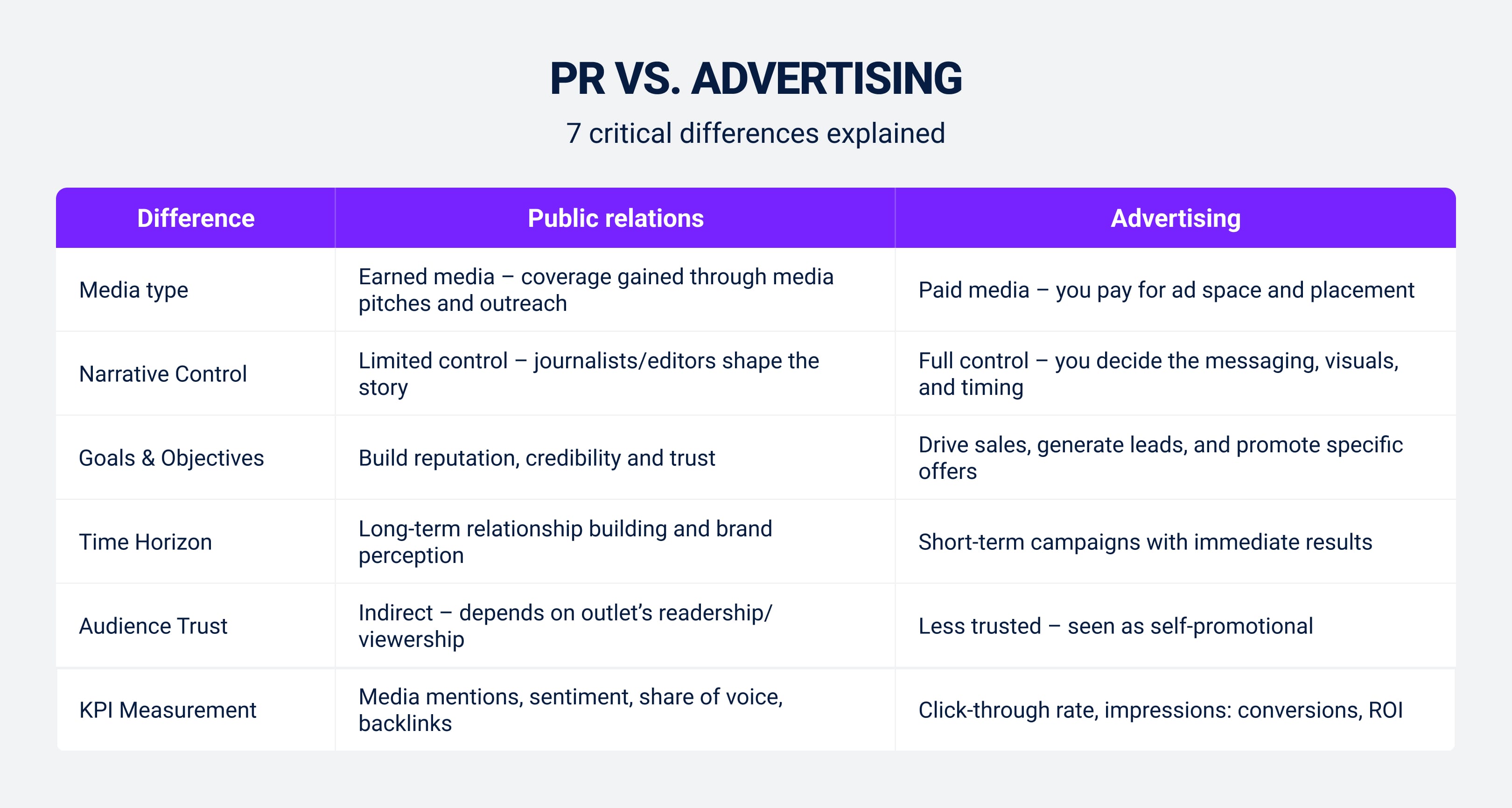
We can break the differences between PR and advertising down into the following seven categories:
1. Earned vs. paid media opportunities
The main difference between public relations and advertising is that PR involves earned media placements while advertising is paid.
With PR, you create a story and pitch it to the right people. If they’re interested in your story, they might publish an article or post about you or feature you on their show.
There are numerous ways to earn media features:
- Generate buzz on social media platforms for something innovative, transgressive, or otherwise newsworthy
- Write an expert blog post and share it on Twitter, LinkedIn, or sites like Medium
- Go to conferences and build relationships with reporters who cover your industry
- Get invited to speak on podcasts or radio shows
- Have influencers or brands reach out to you for collaborations
That's why PR professionals have such different roles from advertisers. They need to build strong relationships with media outlets to feature their clients.
With advertising, you pay for ad space directly. Whether it’s buying print ads, connected TV placement through a programmatic exchange, or online display ads, advertising gives you a guaranteed spot to promote your product in exchange for money.
That isn't to say that PR is free. While you’re not paying for the ad space directly, you're still investing in PR services to help identify and secure those opportunities.
Plus, publications and media outlets are multimillion-dollar businesses and still operate as such. Countless companies pay for media placements, and most publishers work on a transactional level.
The difference here is that you can still earn media coverage by selling a great product or service and presenting a unique story. But nobody in their right mind would advertise your product for free.
2. Control over the narrative
When it comes to ads, you choose the media outlet and control the messaging. You buy ad space from a newspaper, rent billboard space, or book TV time.
But a huge element of public relations is the fact that you can't control everything that comes out about your brand. Reporters have their own agendas, and they don't always tell the story you’re hoping for. And in the case of dark PR campaigns (or potential predatory campaigns), competitors might use the media to spin the story in a way that could damage your brand’s reputation.
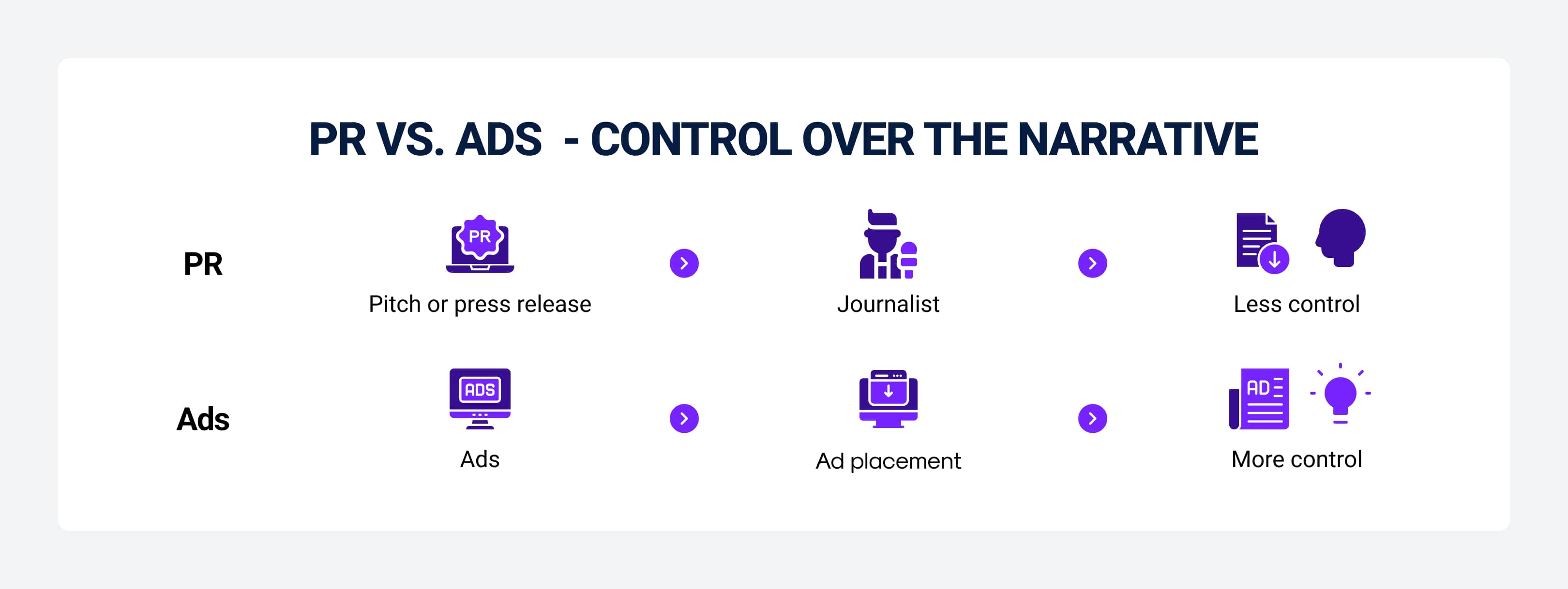
This is why a PR strategy also has a risk management element built into it — you need to be prepared for questions, anticipate how stories might turn out, and actively manage your reputation.
When you run ad campaigns, you face a lot of the same risks and challenges. Your ad might not be well-received, and you could earn some bad press for running it. So the same risk management strategies apply here, too.
But advertising gives you a higher level of control over the message.
- You write the copy for your campaigns.
- You choose the distribution channels.
- You decide on the targeting and placement.
Ultimately, that's why PR needs to work hand-in-hand with advertising for a successful marketing strategy. Ads allow you to control the message in a way that PR can't, while PR gives you access to more organic media coverage and press opportunities.
3. Goals and objectives
One of the biggest differences between PR and advertising comes down to what each one is trying to achieve.
- Advertising is about driving specific actions (usually sales, sign-ups, or clicks). You’re paying to get in front of a defined audience with a clear, controlled message. The goal is direct and measurable: conversions.
- PR is about building relationships and credibility. It focuses on long-term perception, reputation, and trust. You’re earning attention, not buying it. The outcome is harder to quantify but just as critical for growth — things like media coverage, public sentiment, and brand authority.
Remember Nike’s “Dream Crazy” campaign featuring Colin Kaepernick? That ad was crafted to spark attention, reinforce brand values, and ultimately drive sales.
It worked; Nike’s online sales jumped 31% in the days following its release.
Now think of Apple’s keynote events (like the recent WWDC 2024 keynote). They’re not ads. They’re PR masterclasses: they position Apple as an innovator, get media coverage without buying it, and shape public perception through storytelling.
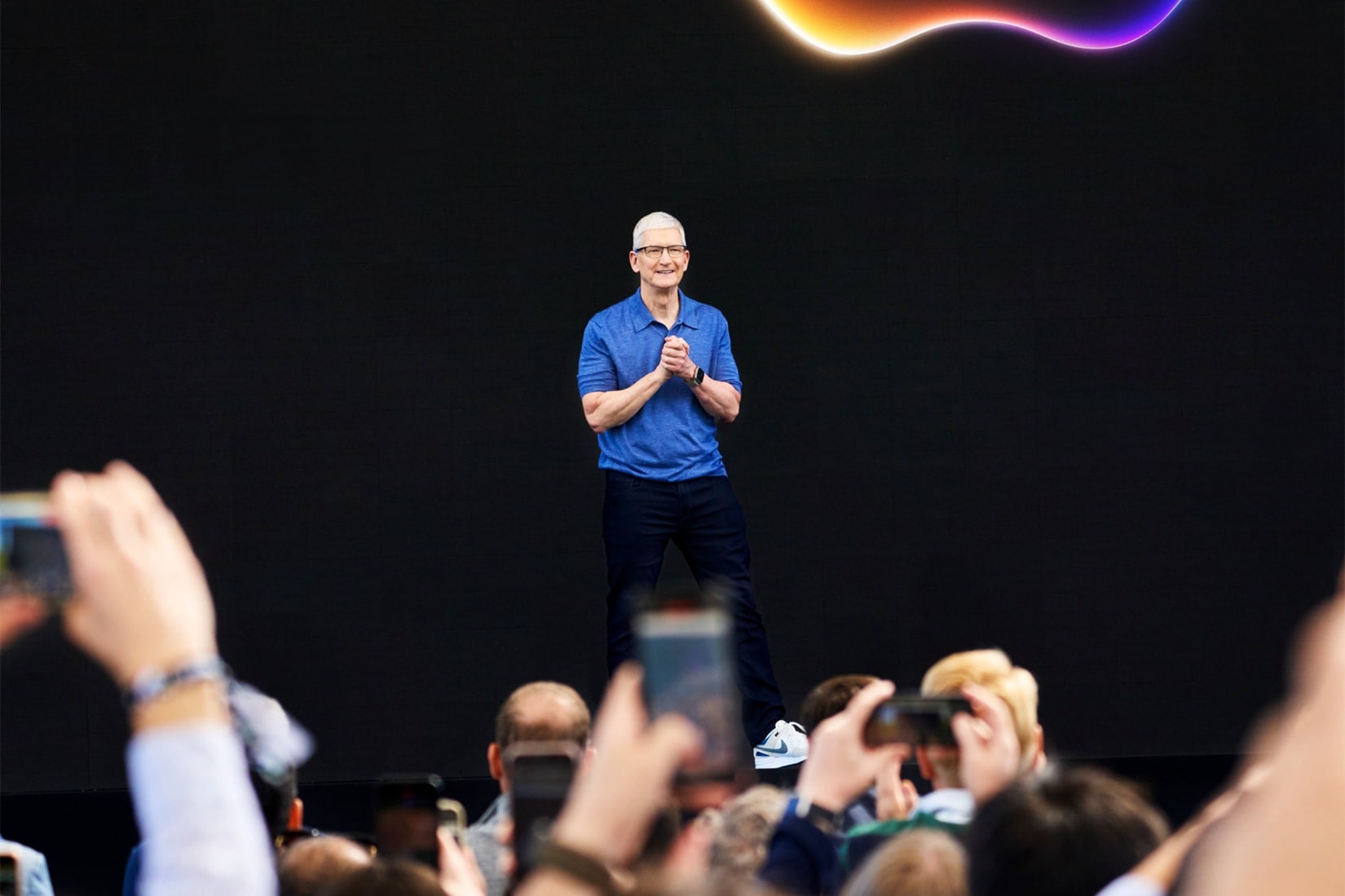
Rather than push out tons of content saying they’re integrating ChatGPT into their software ecosystem, they just announce it in the keynote. Hundreds of news and media outlets do all the talking for them.
4. Long-term vs. short-term focus
Advertising is built for speed. You launch a campaign, and within hours or days, you start seeing results — impressions, clicks, conversions. It’s designed to create immediate action.
PR plays the long game. It’s about consistency over time. One press mention won’t build your reputation, but a steady stream of thought leadership, media coverage, and brand storytelling will.
Think of Snickers’ “You’re Not You When You’re Hungry” ad campaign. From the first commercial with Betty White to dozens of global variations, each ad was made to grab attention in that moment and get people to buy a Snickers today.
The short-term focus? Drive instant brand recall and impulse buys.
That’s not an ad. That’s earned trust built over years. And the end result is that customers feel good about buying Patagonia's products.
Bottom line: Advertising gives you a spike. PR builds your foundation. The best brands use both — one for momentum, one for staying power.
WE ARE A FULL-SERVICE PR AGENCY
Get featured in top-tier media, build credibility fast, and attract new business with proven PR strategies that actually deliver results.
Let's talk - Schedule a call with our expert team today to see how we can help!
5. Audience targeting
Advertising lets you laser-target. You can define exactly who sees your message. You can segment by age, location, interests, income, job title, and countless other variables. It’s data-driven and controllable. You pay for placement, and you decide who gets it.
PR is broader and more organic. You influence the platforms and voices your target audience already trusts, rather than controlling the audience themselves. It’s about where the story appears, who shares it, and how it spreads.
Spotify’s “Thanks 2016, It’s Been Weird” campaign is a great example of hyper-targeted advertising. They used listener data to create personalised billboard ads in specific cities, like:
"Dear person who played ‘Sorry’ 42 times on Valentine’s Day, what did you do?”
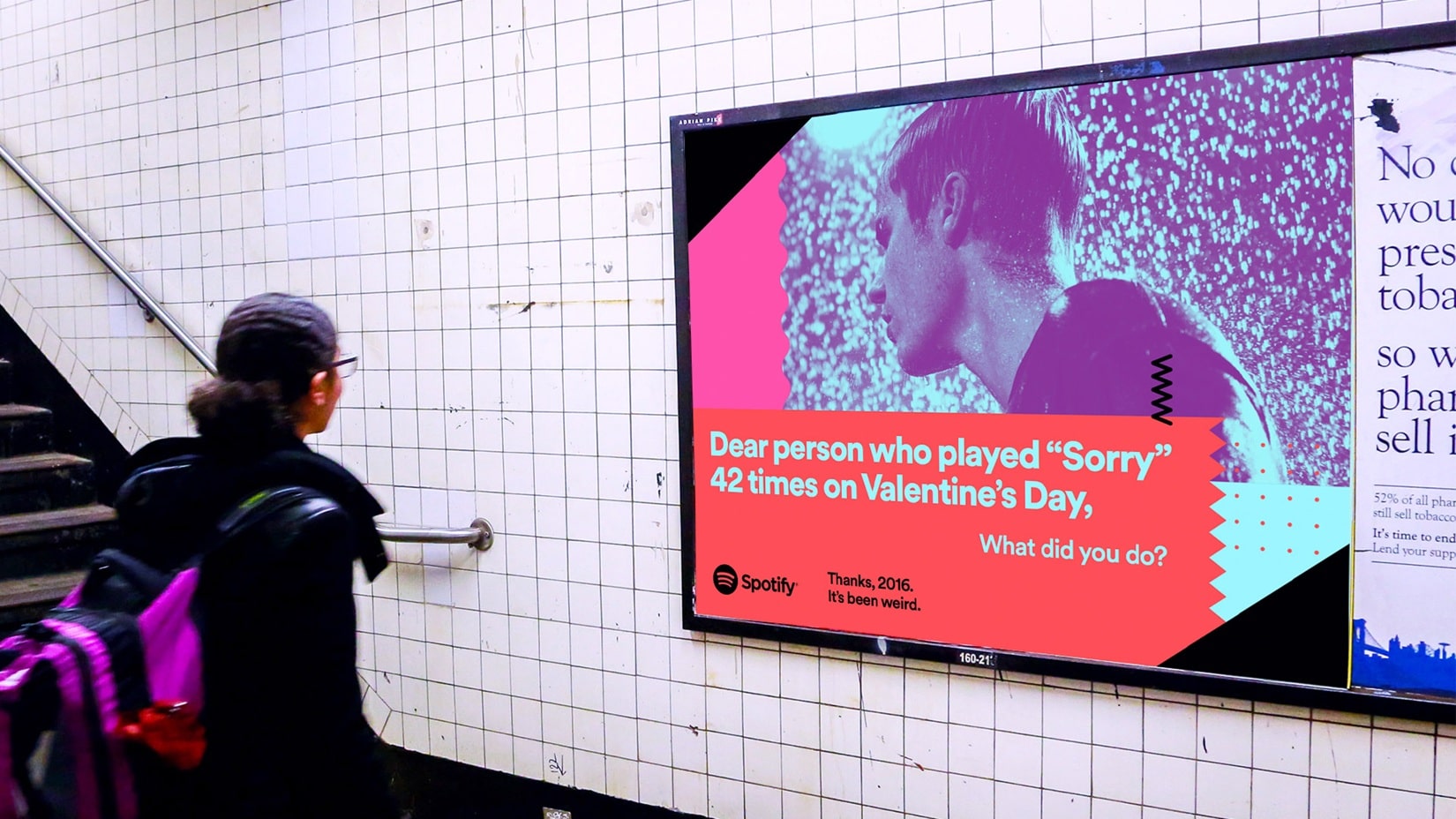
It was clever, direct, and designed to hit precise segments with high relevance.
Now take Tesla.
Elon Musk didn’t rely on traditional ads to build a $1 trillion company. He leans into earned media, like interviews, (polarizing) tweets that get covered by the press, viral product launches, and silly angles only he could come up with, like launching a Tesla Roadster into space (a PR double whammy, since it was actually meant to demo a SpaceX rocket).

Think about it: a single tweet about Tesla’s stock price being “too high” instantly tanked it by over 10%.
He doesn’t get to choose who covers the story, but the PR machine ensures it lands in front of investors, fans, and the public, with massive reach and zero ad spend.
6. Trust from the audience
Ads get seen. PR gets believed. That’s the core difference when it comes to trust.
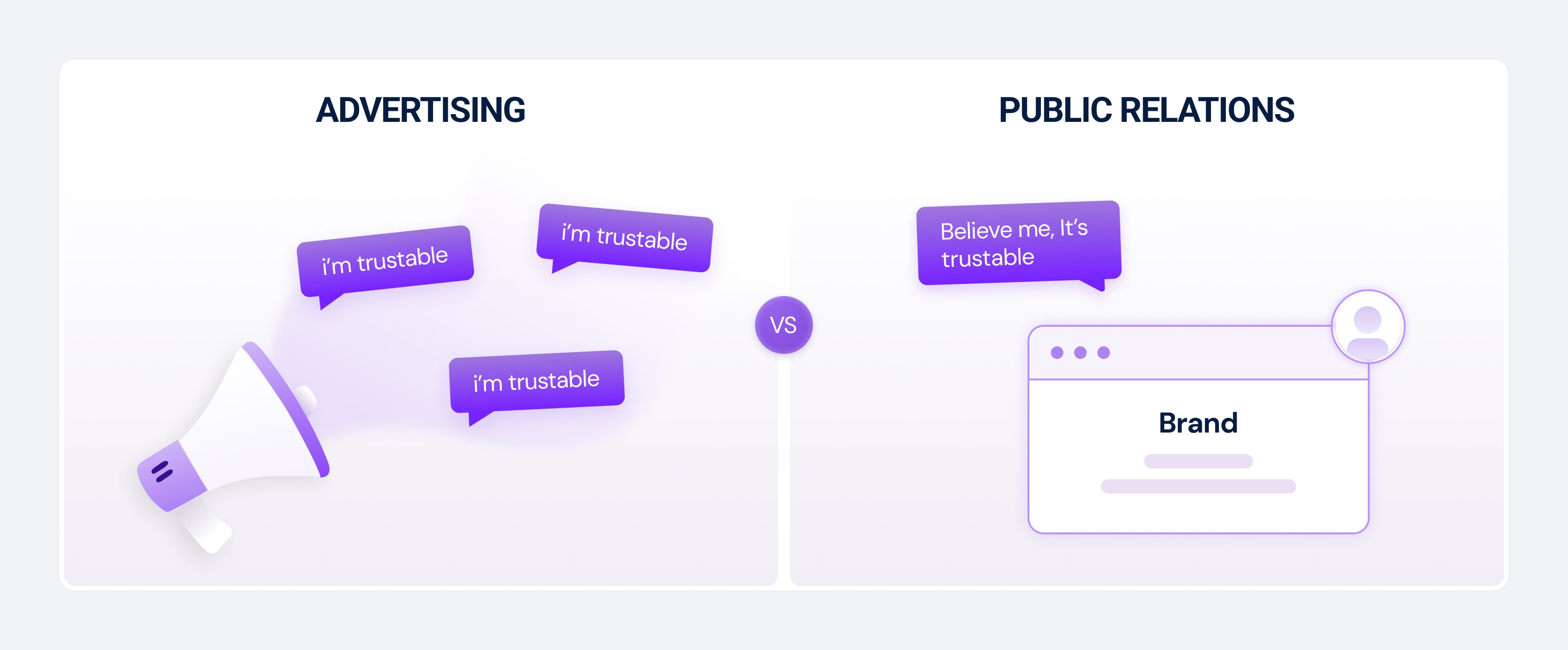
Advertising is inherently self-promotional. Take McDonald’s “I’m Lovin’ It” campaign. One of the most iconic taglines ever.
It's catchy, memorable, and successful. But no one thinks it’s an unbiased opinion.
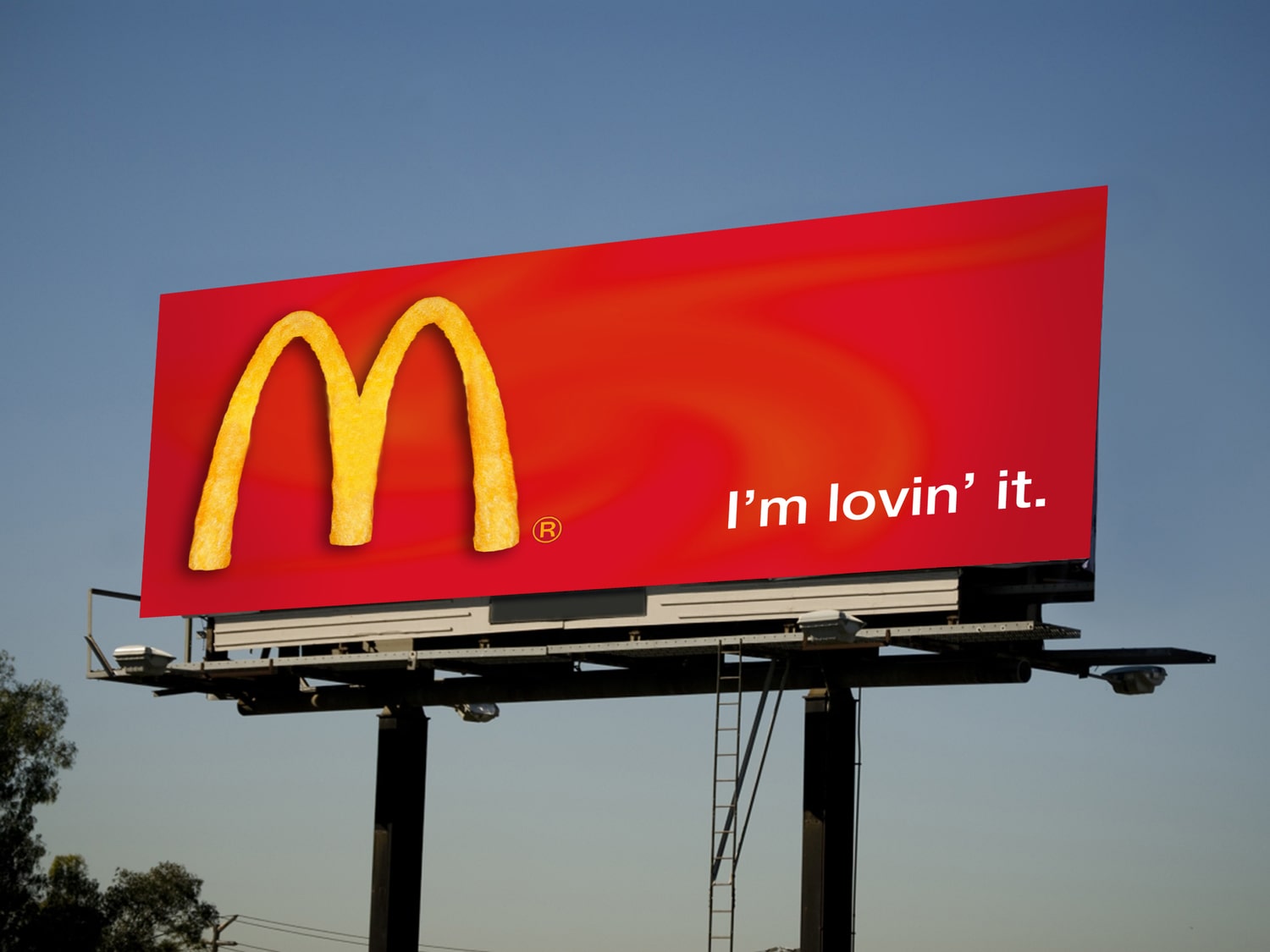
Now compare that to how Airbnb used PR to rebuild trust after safety, over tourism, and housing price concerns started to make headlines.
Instead of buying ad space, they leaned on media interviews, extensive reports (like this one on the increasing overlap between travel and tourism), public safety updates, and partnerships with tourism boards to shape the narrative.
The goal wasn’t to sell, it was to reassure.

This is an important distinction because most consumers don't trust brand advertising anymore.
- Only 30% of U.S. adults trust TV ads, according to a February 2023 survey.
- Nearly 50% of that survey's respondents express distrust toward influencers.
- According to 2024 data from Forrester, just 22% of younger consumers and 12% of older ones don't trust ads on social media.
- A 2023 Nielsen study revealed that 64% of consumers actively avoid ads on free, ad-supported video services.
Ads get you a direct response, but you need PR to balance that out with social proof.

7. KPI measurements
Advertising is easy to measure. PR effectiveness? Not so much.
When you run an ad campaign, you can track just about everything: impressions, click-through rates, cost per acquisition, return on ad spend. You get hard numbers, fast feedback, and clear attribution.
PR, on the other hand, is fuzzier. Success isn’t always a straight line from press to purchase. You’re measuring visibility, sentiment, and influence — things that matter deeply but aren’t always tied to clicks or sales.
Look at Old Spice’s “The Man Your Man Could Smell Like” campaign.

Not only did it go viral, but it also led to a 125% increase in sales in just a few months. That’s a direct line between creative output and measurable ROI.
Contrast that with Dove’s Real Beauty campaign.
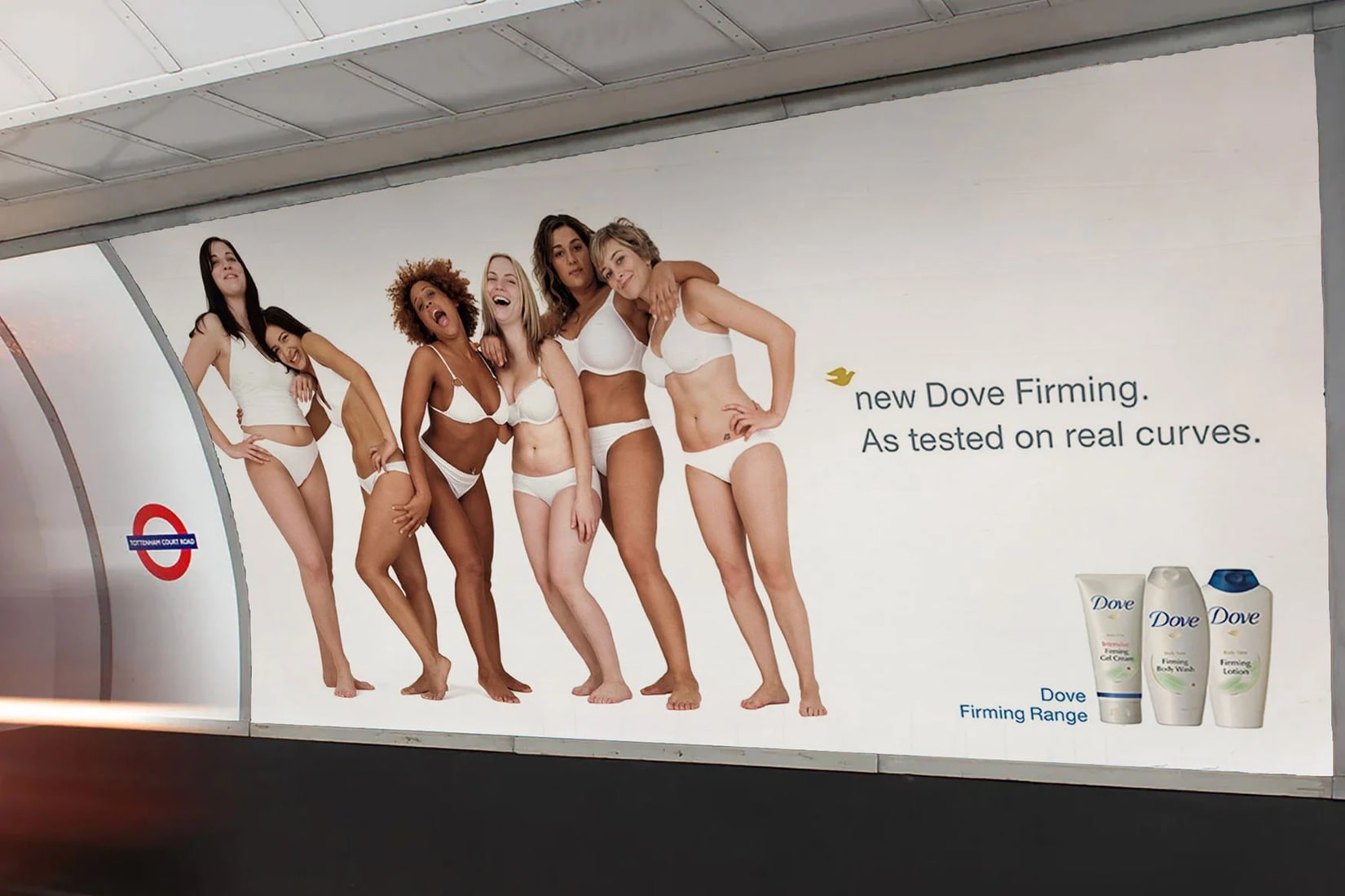
While it included paid elements, its PR impact — panel discussions, press coverage, cultural conversations — extended far beyond the ads.
There are quantifiable PR metrics you can track:
- NPS score
- Share of voice
- Sentiment score
- Social media mentions
- Earned media impressions
But the shift in brand perception and consumer trust couldn’t be pinned to a single metric, but it reshaped the way people talked about beauty. That’s long-term brand equity, and it doesn’t fit neatly in a spreadsheet.
What are the main advantages of PR over advertising?
There's a time and a place for advertising (we know that!). But PR has many advantages over advertising.
PR gives your brand more visibility.
If you want a broad reach and higher visibility, PR is the way to go. Earned media is king when it comes to building trust and credibility, generating word-of-mouth, and getting the word out about you, your company, or its products.
Sure, you can hyperscale an ad campaign, but it would cost a lot of money. The PR cost is relatively low when you consider how widely your message can be spread, and it's much more natural-looking than an ad.
PR can be more reliable.
Advertising is mostly data-driven and based on consumer behavior and demographics. But with PR, you can sometimes get more reliable and accurate feedback—especially when it's coming from user-generated content (UGC).
For example, a Yelp review about a restaurant combines personal preferences and opinions of the individual reviewer. That kind of information is invaluable for any brand looking to improve its product or services.
PR has an easier approach to grabbing your target market.
Paid ads are often where people first look to find something they need. But getting people to click on your ads is harder than you think.
If you create a solid press release, you can find a few target publications and hire a press release distribution service to get your message out and in front of the right people.
Frequently Asked Questions
Can PR replace advertising?
PR will not replace advertising. Instead, PR and advertising campaigns will see increasing amounts of overlap, and marketers need to develop a strategy that utilizes both. PR can help increase brand visibility and trust, while advertising campaigns focus on generating sales and revenue through data-driven practices.
Is advertising or PR more credible?
The average consumer does not trust company advertisements or press releases. Earned media coverage from a third-party source is generally seen as the most reliable and credible.

